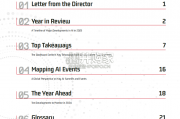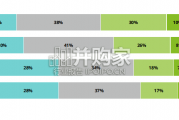China’s financing and investment spread across 61 BRI countries in 2023 (up...
2024-02-27 31 英文报告下载
When we asked executives about the functions that can be transitioned with relative ease to remote working, IT/digital was the top ranked followed by customer service (see Figure 3). In the half yearly results for UK-based retailer, Next PLC, chief executive officer – Simon Wolfson says, “The benefits [of new ways of working] fall into two categories: (1) in our warehouse and call center operations we have discovered more efficient ways of working and (2) in non-operational departments such as IT and Buying, working from home has forced us to take advantage of new technology with all its possibilities for improved communications, efficiency, and employee job satisfaction.”
However, even with those roles that are deemed impossible to shift to remote working, organizations still need to think how to provide working flexibility for employees in those teams. So far, most organizations have announced remote working policies only for corporate employees. Companies would need to be careful not to create a rift between knowledge workers who can transition to remote work easily and the shop floor or factory workers, whose jobs are more tied to organizational premises. As Sunil Ranjhan, senior vice president, HR at automobile company Maruti Suzuki India, told us, “Currently the pandemic is on so you could have very differentiated ways of working. But comparisons between blue-collar and white-collar employees are bound to come up. Going forward, I see that could be one of the issues.” Increasing automation of production processes, for example, can help blue-collar workers to work remotely more often. Organizations will need to think about how to extend flexible working ways (number of hours, shifts, rotation of roles, etc.) to workers in high-touch roles.

标签: 英文报告下载
相关文章

China’s financing and investment spread across 61 BRI countries in 2023 (up...
2024-02-27 31 英文报告下载

Though the risk of AI leading to catastrophe or human extinction had...
2024-02-26 52 英文报告下载

Focusing on the prospects for 2024, global growth is likely to come i...
2024-02-21 96 英文报告下载

Economic activity declined slightly on average, employment was roughly flat...
2024-02-07 67 英文报告下载

Economic growth can be defned as an increase in the quantity or quali...
2024-02-06 82 英文报告下载

In this initial quarterly survey, 41% of leaders reported their organizatio...
2024-02-05 66 英文报告下载
最新留言